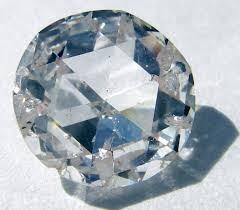American scientists have discovered a new form of carbon that could be used to manufacture diamonds at room temperatures.
Dubbed Q-carbon, the new allotrope, or form, was discovered by researchers from the North Carolina State University. According to the researcher, Q-carbon displays several unique properties that have not been seen in the other two forms, graphite and diamond. To start, it is ferromagnetic, which means that it can be attracted by magnets. It also possesses greater strength than regular diamond. Furthermore, new allotrope glows when radiation is shined onto it, IFLScience.com reported.
NC State researcher Jay Narayan, lead author of the three papers on his team's findings, expressed his excitement over their discovery. "The only place it (Q-carbon) may be found in the natural world would be possibly in the core of some planets," he remarked.
To make the material, Narayan and his team first prepared a substrate, or the material in which the reaction will take place. They then coated it with a thin layer of amorphous carbon, such as coal. From there, it was blasted with a laser pulse for 200 nanoseconds, heating it up to 3726 degrees Celsius. This was then cooled rapidly to crystallize the Q-carbon and deposit a thin film around 20 to 500 nanometers thick.
Narayan added that, by varying factors like the type of substrate used or the length of the laser pulse, they were able to control the way Q-carbon forms, allowing the researcher to create a variety of small-scale diamond structures like nanoneedles and nanodots, which can have plenty of applications in the delivery of drugs, industrial processes, and electronics.
He also noted that the whole process can be conducted at room temperature and ambient pressure, as they are using a laser similar to those used for eye surgeries, Forbes reported.
However, Narayan stressed that their work is still far from being commercially viable, as an inexpensive large-scale production method for 1-carbon has yet to be developed. He added that they also have more to learn about the new material and its properties.


